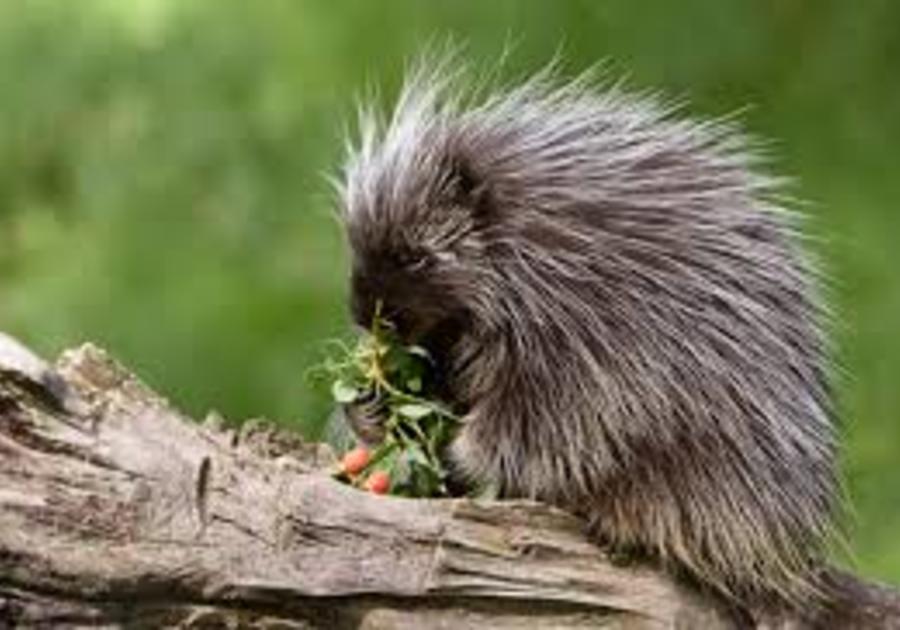Porcupine
The porcupine is the prickliest of rodents, though its Latin name means “quill pig.” There are more than two dozen porcupine species, and all boast a coat of needle-like quills to give predators a sharp reminder that this animal is no easy meal. Some quills, like those of Africa's crested porcupine, are nearly a foot long.
Porcupines have soft hair, but on their back, sides, and tail it is usually mixed with sharp quills. These quills typically lie flat until a porcupine is threatened, then leap to attention as a persuasive deterrent. Porcupines cannot shoot them at predators as once thought, but the quills do detach easily when touched.
Many animals come away from a porcupine encounter with quills protruding from their own snouts or bodies. Quills have sharp tips and overlapping scales or barbs that make them difficult to remove once they are stuck in another animal's skin. Porcupines grow new quills to replace the ones they lose.
The porcupines found in North and South America are good climbers and spend much of their time in trees. Some even have prehensile (gripping) tails to aid in climbing. The North American porcupine is the only species that lives in the U.S. and Canada, and is the largest of all porcupines. A single animal may have 30,000 or more quills
North American porcupines use their large front teeth to satisfy a healthy appetite for wood. They eat natural bark and stems, and have been known to invade campgrounds and chew on canoe paddles. North American porcupines also eat fruit, leaves, and springtime buds. Porcupines are herbivores. This means they eat mostly vegetation.
Though they don't eat meat, porcupines chew on bones to sharpen their teeth. Bones also give them important minerals, like salt and calcium, to keep them healthy. Porcupines are also known to eat bugs and small lizards every now and then.
Female porcupines carry their young for a gestation period of 16 to 31 weeks, depending on species, and give birth to one to three babies at a time. Baby porcupines are called porcupettes.
Porcupettes are about 3 percent of mother's weight at birth, according to the San Diego Zoo. At birth, they have soft quills, which harden in a few days. Porcupettes mature at 9 months to 2.5 years, depending on species and can live up to 15 years in the wild.
Follow the State Forest State Park - Colorado Parks and Wildlife Facebook Page
 |  |  |
🌸Get a FREE, kid-friendly event calendar for Ute Pass through Teller County, full of festivals, fairs, activities, events and more! Sign up by clicking HERE! 🌸
Is your business, church or group holding an event that is not listed? Submit the event by CLICKING HERE! Thank you!



